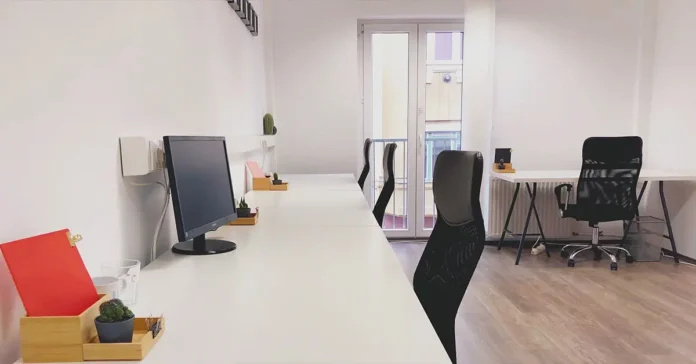The process of downsizing your office space can be a strategic move, but pitfalls are lurking around the corner. In this guide, we’ll explore the top 4 common errors you must steer clear of to ensure a smooth and successful downsizing process. Downsizing isn’t just about physical space reduction; it’s about optimizing efficiency, boosting productivity, and creating a workspace that aligns with your current needs.
As we delve into each common mistake, we’ll get to know the practical insights and strategies to help you avoid these pitfalls. From underestimating storage needs to neglecting employee input, each point emphasizes the importance of proper planning and decision-making.
So, let’s dive in together, uncover the secrets to effective office space downsizing, and transform this challenging task into an opportunity for positive change. With the right approach, downsizing can become a catalyst for enhanced workplace dynamics and a more agile, responsive business environment.
Downsizing Your Office Space
Whether you’re adjusting to a remote-friendly model or seeking efficiency, downsizing is a strategic move that requires careful consideration. From decluttering desks to reimagining meeting spaces, we’ll explore how downsizing can create a more functional and agile work environment. Join us as we delve into practical solutions and avoid common pitfalls. This will make sure your downsizing experience is not just about reducing space but enhancing productivity and fostering a workspace that adapts seamlessly to the demands of the modern professional landscape.
1. Failure to Establish Current and Long-Term Priorities
The single biggest mistake an organisation can make when looking for office space is not deciding on current and long-term priorities. This is because it exposes you to make decisions based on short-term needs rather than what is profoundly important.
For example, even if you need a place to house your expanding team, you might go for a smaller office space simply because it is less expensive. However, if you want to expand your business, you must consider factors other than price, such as technical requirements, customer experience, space layout, budget, growth, and so on.
2. Failure to Look Beyond Traditional Alternatives
You want to find the best-serviced office space for your company while staying within your budget. However, many people are tempted to accept a lower-cost offer, believing that this is the best choice. Many choose a traditional office set-up because they are either unaware of alternatives or are too risk-averse to try them.
Consider the difference between a traditional office lease and a flexible serviced office lease. A traditional office will bind you to a long-term lease, for years. What if the space is not suitable for your business or you dislike the property owner? You are stuck until your lease expires. Breaking the lease early usually comes with a hefty penalty that will undoubtedly blow your budget.
Hence it may be prudent to consider co-working spaces and hybrid working arrangements.
3. Failure to Consider all Expenses Associated with your Office Space
Yes, office space excites business owners so much that they do not consider the costs associated with the space. They only look at the rent and believe that is all they must pay, but this is not the case.
When you are downsizing your office space, you must also consider the extra costs such as utilities, amenities, and maintenance costs, which affect the total cost. If you intend to use a coffee machine, you must pay for it separately. In addition, if you intend to bring other office equipment into the office, you must factor those costs into your business expenses.
4. Failure to Calculate Office Space Accurately
Miscalculated square footage is one of the primary reasons that most businesses these days are wasting office space or cramping their employees in a crowded space.
It is understood that when looking for new office space, you must consider your company’s growth, as you may need to hire a few more employees in the future. However, calculating it without a proper base can lead to errors such as having more desks than you need. It is just a waste of space, and you will have to consider subletting it.
Always keep in mind that the ideal workplace space for an employee is 100 square feet on average. You must correctly calculate the amount of space needed for your employees considering the company’s growth. While downsizing, keep your storage space to a minimum. To help in the process, consider renting a self-storage unit for both the long-and-short-term downsizing to keep less used items like documents or equipment.
Conclusion
By learning from common mistakes, you empower your team and enhance workplace efficiency. Remember, it’s not just about minimizing physical space but optimizing it for maximum productivity. Prioritize open communication, involve your team in the process, and adapt a flexible approach to meet evolving needs.
Embrace change, celebrate achievements, and keep the focus on fostering a collaborative and positive atmosphere. With careful planning and avoiding pitfalls, downsizing becomes a transformative process, ensuring your office space aligns seamlessly with your business goals and the well-being of your team. Happy downsizing!
FAQs
Q1: What are the common errors to avoid when downsizing an office space?
A1: Avoid errors such as inadequate planning, ignoring employee needs, overlooking technology updates, and neglecting legal considerations.
A2: Start by conducting a thorough space assessment, involve key stakeholders, create a detailed plan, and communicate transparently with employees.
A3: Employee feedback is necessary; involve them in discussions, address concerns, and consider their needs to maintain productivity during the downsizing.
A4: Start considering remote work options, cloud storage, and digital communication tools to streamline operations in a downsized office.
A5: Ensure compliance with labor laws, consult legal professionals, handle layoffs with empathy, and provide fair severance packages to avoid legal complications.
A6: Create a comprehensive inventory, prioritize essential equipment, and ensure a smooth transition by planning for necessary resources throughout the downsizing process.
A7: Open communication, offering support services, providing clear reasons for downsizing, and recognizing employee contributions can help during office downsizing.
A8: Downsizing is not just about cost-cutting; it can also lead to improved efficiency, increased agility, and a more adaptable organizational structure.
A9: It can contribute to sustainability by reducing energy consumption, minimizing waste, and promoting a more eco-friendly work environment.
A10: They provide expertise in planning, employee communication, legal compliance, and overall strategy, ensuring a well-executed downsizing process.








